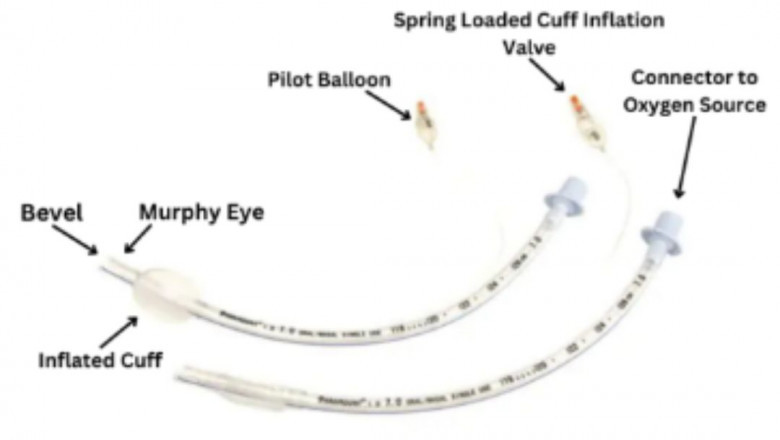views
Introduction
In modern airway management, the cuffed endotracheal tube plays a vital role in ensuring patient safety during anesthesia, intensive care, and emergency procedures. Designed to maintain a sealed airway and prevent aspiration, this type of ET tube is widely used in both surgical and critical care environments.
This article offers an in-depth look at the endotracheal tube cuffed, including its structure, applications, benefits, and why high-quality selection is essential for clinical use.
What Is an Endotracheal Tube Cuffed?
An endotracheal tube cuffed is a flexible plastic tube inserted into the trachea through the mouth or nose to maintain an open airway. Unlike uncuffed versions, this tube includes an inflatable cuff near the distal end. Once inflated, the cuff forms a seal between the tube and the tracheal wall, allowing for controlled ventilation and reducing the risk of aspiration.
Key Features of the Cuffed ET Tube
-
Inflatable Cuff: Ensures a secure tracheal seal
-
Pilot Balloon with Valve: Indicates cuff inflation level and allows control
-
Murphy Eye: Secondary opening at the distal end for ventilation backup
-
Radio-Opaque Line: Aids in X-ray visualization for tube placement confirmation
-
Medical-Grade PVC: Clear, soft, and kink-resistant for patient comfort
-
Depth Markings: Provide a visual guide for accurate placement
Applications of the Cuffed Endotracheal Tube
The cuffed ET tube is primarily used in the following scenarios:
-
General Anesthesia: Provides controlled ventilation during surgical procedures
-
ICU Ventilation: Maintains airway access for critically ill patients on mechanical support
-
Emergency Resuscitation: Helps secure the airway during trauma or respiratory failure
-
Aspiration Risk Management: Prevents entry of fluids into the lungs in high-risk patients
-
Prolonged Intubation: Reduces chances of air leaks during extended mechanical ventilation
Benefits of Using a Cuffed ET Tube
-
Airtight Ventilation: Allows precise delivery of oxygen and anesthetic gases
-
Reduced Aspiration Risk: Prevents entry of gastric contents into the lungs
-
Minimal Air Leaks: Enhances ventilator efficiency
-
Patient Stability: Secure placement reduces movement and displacement
-
Better Monitoring: Pilot balloon offers real-time feedback on cuff pressure
Design Types of Cuffed Endotracheal Tubes
Different variants of cuffed endotracheal tubes are available to meet specific clinical needs:
-
High-Volume, Low-Pressure Cuff
-
Preferred in long-term ventilation
-
Distributes pressure evenly, reducing mucosal damage
-
Armored or Reinforced ET Tube
-
Contains a metal spiral to prevent kinking
-
Ideal for head, neck, and prone surgeries
-
Preformed (RAE) Tubes
-
Curved shape for oral/nasal route preference
-
Keeps tubing away from surgical fields
How to Use a Cuffed ET Tube: General Steps
-
Prepare Equipment: Select the correct tube size and test cuff inflation
-
Patient Positioning: Align head and neck properly for intubation
-
Tube Insertion: Pass the ET tube cuffed into the trachea under direct visualization
-
Cuff Inflation: Inflate using the pilot balloon to ensure a seal
-
Placement Verification: Confirm with chest auscultation, capnography, or X-ray
-
Secure Tube: Fix with ties or adhesive to prevent displacement
Note: Only trained healthcare professionals should perform intubation procedures.
Selection Criteria for a Cuffed Endotracheal Tube
Choosing the right cuffed ET tube requires attention to:
-
Size: Based on patient age, weight, and clinical condition
-
Cuff Type: High-volume or low-pressure, depending on usage duration
-
Material: DEHP-free and latex-free PVC is preferable for sensitive patients
-
Sterility: Ensure EO sterilization and tamper-proof packaging
-
Certifications: Check for CE, ISO, or FDA approvals to ensure quality
Precautions in Using ET Tube Cuffed
-
Avoid over-inflation of the cuff to prevent tracheal injury
-
Monitor cuff pressure regularly (ideal range: 20–30 cm H₂O)
Replace tubes periodically during long-term ventilation -
Ensure aseptic technique to prevent infection
Common Sizes and Availability
Cuffed endotracheal tubes are available in a wide range of sizes—from pediatric (ID 3.0 mm) to adult (ID 9.0 mm and above). The appropriate size is determined by clinical guidelines, with consideration for individual anatomical differences.
Use Environments for Cuffed ET Tubes
-
Operation Theaters
-
Intensive Care Units (ICUs)
-
Emergency Rooms (ERs)
-
Ambulances and Field Hospitals
-
Specialized Surgical Centers
These tubes are considered standard equipment in both planned and emergency airway management.
Global Importance and Demand
With increasing global standards for surgical safety and ventilation protocols, the demand for high-performance cuffed endotracheal tubes continues to grow. Healthcare providers seek reliable, sterile, and effective airway devices that support patient safety and clinical performance.
Conclusion
The endotracheal tube cuffed is a cornerstone device in airway management, ensuring sealed, secure, and efficient respiratory support. Whether used in surgical procedures or critical care, it plays a crucial role in protecting the airway and enabling controlled ventilation.
For more information on specifications and product options, visit GST Corporation Ltd, a trusted source of medical solutions for modern healthcare.






















Comments
0 comment